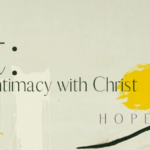A reflection on the intersection of hope, gardening, and activism
I’ve been thinking about seeds a lot lately. It’s Spring, and I’m a gardener.
Years ago I moved to a house with a small patch of dirt – about three square feet. One day as I was at my local Walgreens I saw seed packets marked 10 for $1. I was drawn to them, despite there being only two options – dill and lettuce. I didn’t care; I was ready to try something new and get my hands dirty.
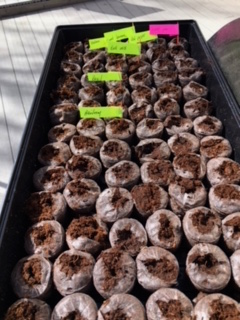
Turning over the dirt I found an initial harvest of broken glass, random parts to nothing and pantyhose. Regardless, I planted with excitement and waited for things to grow. When they actually did, I was hooked.
As years went by my annual efforts grew more consistent and elaborate, moving beyond Walgreens to actual garden centers. To this day, I adoringly walk through the aisles of blooming flowers and plants, wondering: why do I work to grow plants from tiny, finicky seeds? Who has time to plant seeds indoors, months in advance, and nurture their growth? It would be so much easier to buy mature plants, right?
It’s true; there are more efficient ways to have a garden than starting from seeds. At times I wish I could succumb, but the gardener and the activist inside me holds back. I have become enthralled with the process of watching something grow.
Ironically, seeds do not look like they will grow into anything needed or beautiful. They look like something you would sweep into a dustpan and discard. Yet, the sheer act of placing them in dirt, believing they will grow, points directly to a crucial element needed in our community development efforts – hope.
Hope and Faith
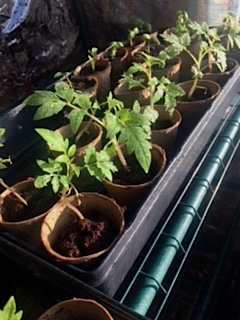
Hope enables you to believe and act, regardless of what you see. Faith, hope’s twin, is intrinsically linked. Both require you to believe in the unseen and set a vision of what can be. It’s a moving forward, not because the results are guaranteed, but because you believe they are worth walking toward.
Hebrews 11, often referred to as the “By Faith” chapter, lists the Patriarchs of the Bible who chose to walk by faith toward a vision of what could be without its evidence. In Hebrews 11:13 we see these people of faith, resilient in their hoping until their deaths. They “welcomed [what they hoped for] from a distance” having a vision of what could be. They had the faith to understand what thousands of years later the Rev. Dr. Martin Luther King, Jr. would refer to as the “arc of the universe” and its bend toward what we hunger & thirst for – justice. (Matthew. 5:6)
As Christian community developers, we can find ourselves wondering if the seeds we plant will ever poke their heads out of the ground. How long must we wait? Will we have to replant? Will we ever see evidence of our efforts?
What We Need
As a social justice activist, much of my life is spent planting seeds without much evidence of growth, placing hopes and ideals into proverbial dirt, hoping for fruit. As I have thought through activism and gardening’s intersection, I have drawn the following correlations.
We need:
Timing
Timing is essential. Nothing is done on a whim. It takes time for plants to transition from a controlled environment to outside unpredictable elements. Regardless of what you cultivate independently, the time to stand up for community is not randomly chosen but carefully considered and approached sustainably.
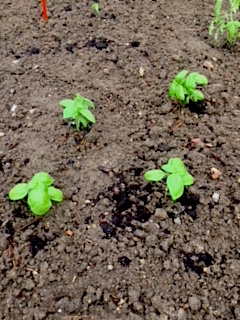 Foundation
Foundation
The strength of roots depends on the quality of the soil. Jesus talks about the importance of soil enabling seeds to take root. In activism, hearts need to be softened. Dirt that is packed down and rocky is not a place to sow seeds of substance. As we walk together toward shared liberation, we can feel hardened, cynical, or “rocky.” Foundations of faith and hope are essential to life and growth.
Patience
Even with the perfect setting for a seed to take root, waiting is unavoidable. Under the surface, work is slow and unseen. It’s easy to get frustrated and impatient. Commitment to the process and patience sustains the life above. You have to learn to wait.
Resilience
Last year, like every year, I began my seeds in an indoor greenhouse and waited until the threat of Colorado snow had passed before planting. After a month, a series of hailstorms destroyed the small plants. Four months of efforts, gone. I’d have to wait until next year to begin again.
There can be months of careful work and sometimes no product to show. I have been a part of community efforts that have succeeded and more that have “failed.” But, each time we come to a place of loss, we begin again.
Rootedness
We need to remain planted and dig deeper roots within ourselves and each other. Strong, mature roots keep us planted and committed to the process of transformation regardless of what comes our way.
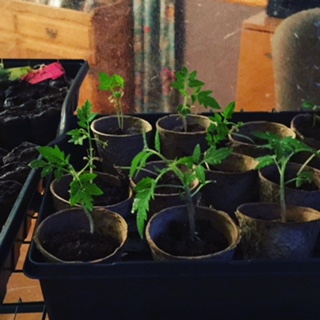
Hope and Rootedness
As we focus our attention on this year’s conference theme: “Rooted,” I’d encourage us all to reflect on the seeds of hope we are planting. Think of the joys and disappointments that have yielded the fruits of our efforts along the way and take time to celebrate! Celebrate that regardless of what the year has brought, we can remain committed to join Christ’s call to work toward the restoration of our broken world. We will reap a harvest if we don’t give up. (Galatians 6:9)
My personal activism journey has been driven by my front row seat to the process of what God is stirring in my community. I had no comprehension of how longevity would test my commitment to this journey, but I know that the work we share alongside our communities is process-driven and not product-driven.
The work of planting seeds has no guarantees, but there is always a choice to hope.




